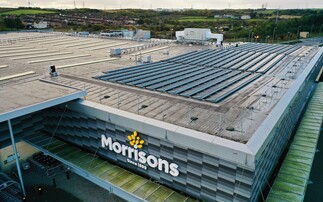
Bas Sudmeijer is managing director and partner, climate and sustainability lead at Boston Consulting Group
Partner Insight: With only a small proportion of emissions produced during final manufacturing, businesses must focus on their supply chains to combat CO2 more effectively, according to Boston Consulting Group
Customer expectations, as well as regulation, mean that carbon reduction and broader sustainability will soon be a necessary component and/or driver of growth plans across many industries. But beyond the hard-to-abate sectors it's often assumed there's little to be done that will really move the needle when it comes to carbon reduction.
BusinessGreen spoke to Bas Sudmeijer, managing director and partner, climate and sustainability lead at Boston Consulting Group (BCG), about how organisations can drive significant change by looking at their supply chains where a substantial proportion of emissions can be tackled at low to no cost.
Q: Why do companies need to tackle emissions across their supply chains?
Bas Sudmeijer: For companies, especially those in consumer-facing sectors, end-to-end supply chain emissions are much higher than the direct emissions from their own operations. By implementing a net zero supply chain, companies can amplify their climate impact, enable emission reductions in hard-to-abate sectors, and accelerate climate action in countries where it would otherwise not be high on the agenda. For a consumer company such as a food and drinks brand, only about five per cent of its emission footprint is generated during direct operations (Scopes 1 and 2). Emissions generated by its suppliers are 10 times higher.
Eight global supply chains account for more than 50 per cent of annual greenhouse gas emissions. Only a small proportion of these emissions are produced during final manufacturing. Most are embedded in the supply chain - in base materials, agriculture, and the freight transport needed to move goods around the world.
Q: Companies are worried about the cost of decarbonisation. How high are these costs and which businesses are most at risk?
BS: In fact, in most supply chains, the costs of getting to net zero are surprisingly low. Our research finds that even full decarbonisation would result in end consumer price increases of only one per cent to four per cent in the medium term - less than $1 on a $40 pair of jeans.
In addition, in most supply chains, there is the potential for significantly more efficiency and for much greater reuse of materials. In addition, a large share of emissions comes from traditional power, which can be replaced relatively cheaply with renewables.
Q: Why has there been little progress so far on supply chain decarbonisation?
BS: The process of decarbonisation is challenging. For one thing, most companies do not understand the extent or the nature of the problem. While a manufacturer can calculate the greenhouse gas emissions from its own operations with a relatively high degree of confidence, getting a view on scope 3 emissions is complex. The challenges are especially daunting for companies with tens of thousands of individual products and significant turnover in the supplier base. Some even struggle to understand who their suppliers are in the first place. It does not help that data-sharing on product emission footprints is still in its infancy.
Q: So how can companies overcome these barriers?
BS: BCG has identified nine initiatives that can enable companies to tackle their supply chain emissions successfully. These include building a value chain emissions baseline and exchanging data with suppliers. Using advanced data analytics, setting ambitious reduction targets on scopes 1 to 3, tracking and publicly reporting on progress will also be key.
Businesses will need to redesign their products to focus on sustainability across the whole value chain and integrate emissions metrics in procurement standards. Working with suppliers to address emissions will be paramount, but companies also need to change the way they operate internally. Procurement functions will have to adjust, as will product development, finance, strategy, and sustainability.
Q: Why take all these actions? What do companies gain from decarbonising their supply chain?
Supply chain decarbonisation presents a giant untapped opportunity for international climate action. It can enable companies with relatively small direct-emissions footprints to have impact on a global scale. And it does so with a very limited impact on final product prices. In most industries, economics are not a meaningful barrier to achieving net zero supply chain emissions. Leading companies are already addressing these challenges. Others should start doing so, too.
Learn more about the potential impact of supply chains on your carbon footprint - click here for more information.
This article is sponsored by Boston Consulting Group.








